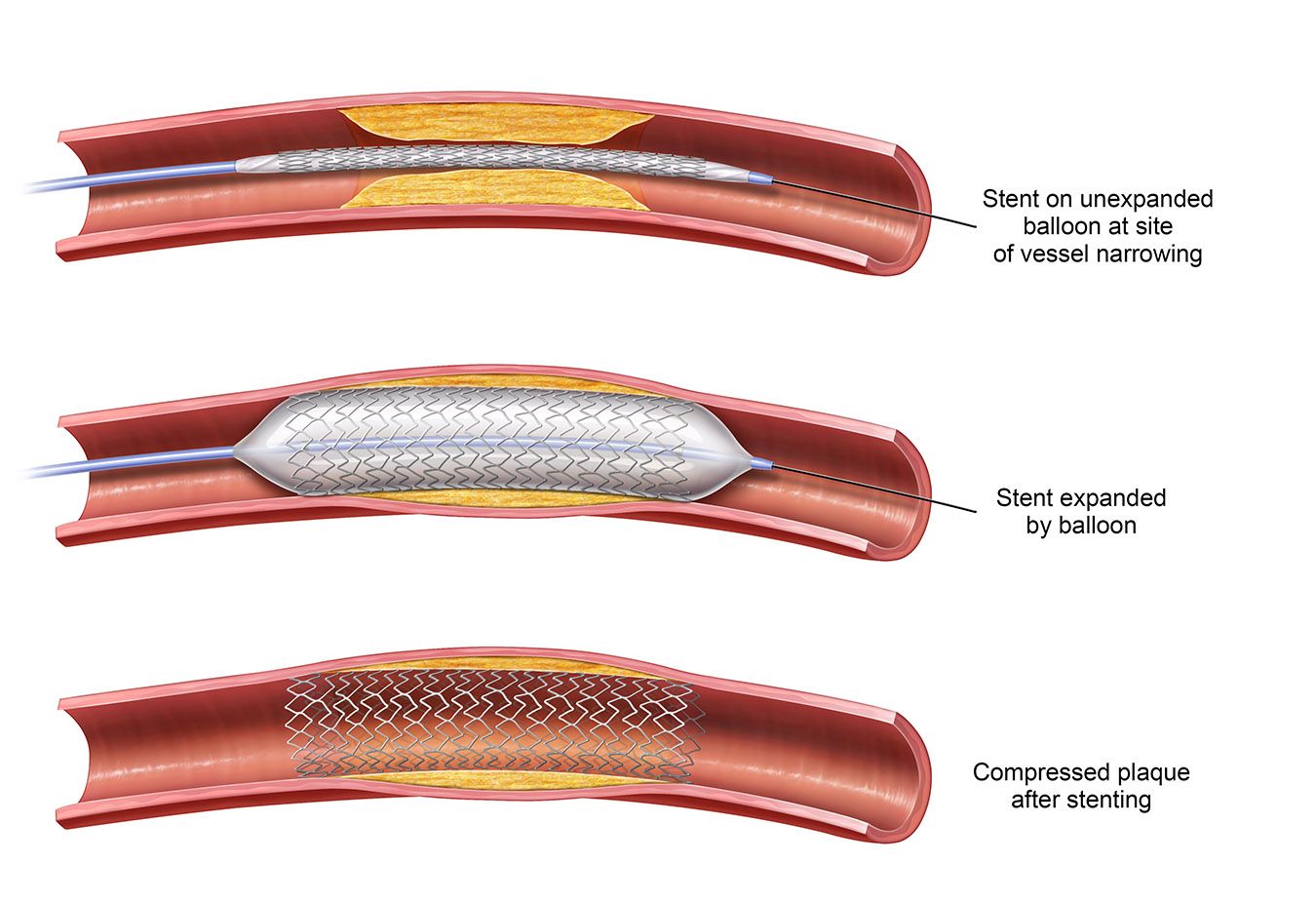Minimally Invasive Treatment After a Peripheral Arterial Disease Diagnosis
 Depending on the severity of the peripheral arterial disease (PAD) and diagnostic testing results as determined by your vascular specialist, treatment of PAD can reduce symptoms and improve your quality of life, reduce your risk of heart attack and stroke, and prevent further complications. Without timely intervention, PAD may worsen and can become life threatening if left untreated.
Depending on the severity of the peripheral arterial disease (PAD) and diagnostic testing results as determined by your vascular specialist, treatment of PAD can reduce symptoms and improve your quality of life, reduce your risk of heart attack and stroke, and prevent further complications. Without timely intervention, PAD may worsen and can become life threatening if left untreated.
The goal of PAD treatment is to restore blood flow to the limbs by minimizing the narrowing of the arteries and prevent the condition from worsening. Severe PAD may require surgical treatment, such as bypass surgery. In cases with timely intervention, there are minimally invasive options used to treat PAD which remove blockages and open up narrowed blood vessels, improving blood flow. These interventional procedures include angioplasty, stent placement, and Atherectomy.
Angioplasty, Stent Placement, and Atherectomy
Angioplasty and Stent Placement

Angioplasty is a minimally invasive procedure performed under local anesthesia to open narrowed or blocked blood vessels that supply blood to your legs. An IV (intravenous line) into the arm or hand will provide you with enough sedation to make the procedure as comfortable as possible.
Your physician will insert a balloon-tipped catheter (a thin, hollow tube) into a blood vessel in your upper thigh area (groin). Using continuous x-ray guidance, the catheter is positioned in the artery that is being treated.
Once the catheter is in place, the balloon is inflated for a short period of time, which compresses the plaque outward against the artery wall widening the artery and restoring blood flow. Next, the balloon is deflated and the catheter is removed from your body.
Stents are often implanted in conjunction with a balloon angioplasty procedure. A stent is a metal, mesh tube that expands to hold the affected artery open. The stent is placed through a specially designed catheter into the affected artery providing internal structural support to more effectively maintain good circulation in the treated vessel. The stent remains in place so that blood can flow through the previously blocked artery.
Atherectomy
An atherectomy also involves the use of a catheter and x-ray guidance like angioplasty and stent placement, but instead of inserting a balloon, the catheter used for atherectomy has a sharp blade on the end that is designed to remove and collect plaque from your blood vessel. Once sufficient plaque is removed, the catheter is removed.
Who is a Candidate for Angioplasty, Stent Placement, and Atherectomy?
When lifestyle changes, exercise, and medications do not reduce PAD symptoms, and you are not diagnosed with severe PAD, then you may be a good candidate for angioplasty, stent placement or atherectomy – minimally invasive procedures that can restore blood flow and allow you to get back to your normal daily life.
Speak with your physician to find out which, if any, procedure is right for you
Benefits vs. Risks of Angioplasty, Stent Placement and Atherectomy
Using angioplasty, stent placement, or an atherectomy to treat PAD has many benefits, but, during any procedure there are risks. However, major complications are uncommon. Be sure to speak with your physician to learn all the benefits and risks.
BENEFITS
- Performed under local anesthetic, not general anesthesia
- Outpatient setting, no hospital stay
- No incision needed, small skin nick doesn’t require stitches
- Quick return to normal activities
RISKS
- Insertion site may bleed or become infected
- Artery may become blocked again (restenosis)
- Adverse reaction to contrast material
Recovering from Angioplasty, Stent Placement, and Atherectomy
Shortly after the procedure is completed, you can go home in most cases. Before you leave the center, the procedure site will be inspected for bleeding or swelling. Pain medication and blood thinners may be prescribed for you, so make sure to follow all directions from your physician. Make arrangements to have a friend or family member drive you home and avoid heavy lifting, and do only light activities for a few days after the procedure.
How We Can Help You
At Azura Vascular Care, our vascular specialists have the expertise and resources in many of our outpatient centers for the diagnosis, treatment and management of peripheral arterial disease. With our unique depth f training, diagnostic expertise and state-of-the-art imaging, we specialize in offering treatment plans for each individual PAD patient to ensure the best possible outcome. We are dedicated to providing an exceptional patient experience with a focus on superior patient care. This philosophy exists in all of our vascular centers throughout the United States. We offer several non-invasive or minimally invasive, outpatient procedures for those patients who have been referred for evaluation, or have been diagnosed with peripheral arterial disease (PAD).
Azura’s team of skilled health care professionals will work with your current medical team to ensure a seamless coordination of care so that you can rest assured you are receiving the right PAD treatment for your individual case.
If you are ready to consult with one of our specialists, find a center near you or search for one of our physicians. At Azura Vascular Care, we deliver far more than our patients expect. We bring our full range of medical capabilities and service excellence to every patient, every visit at each of our centers nationwide.
Ready to Speak with a Specialist?
Search for a center or physician in your area and request an appointment online.